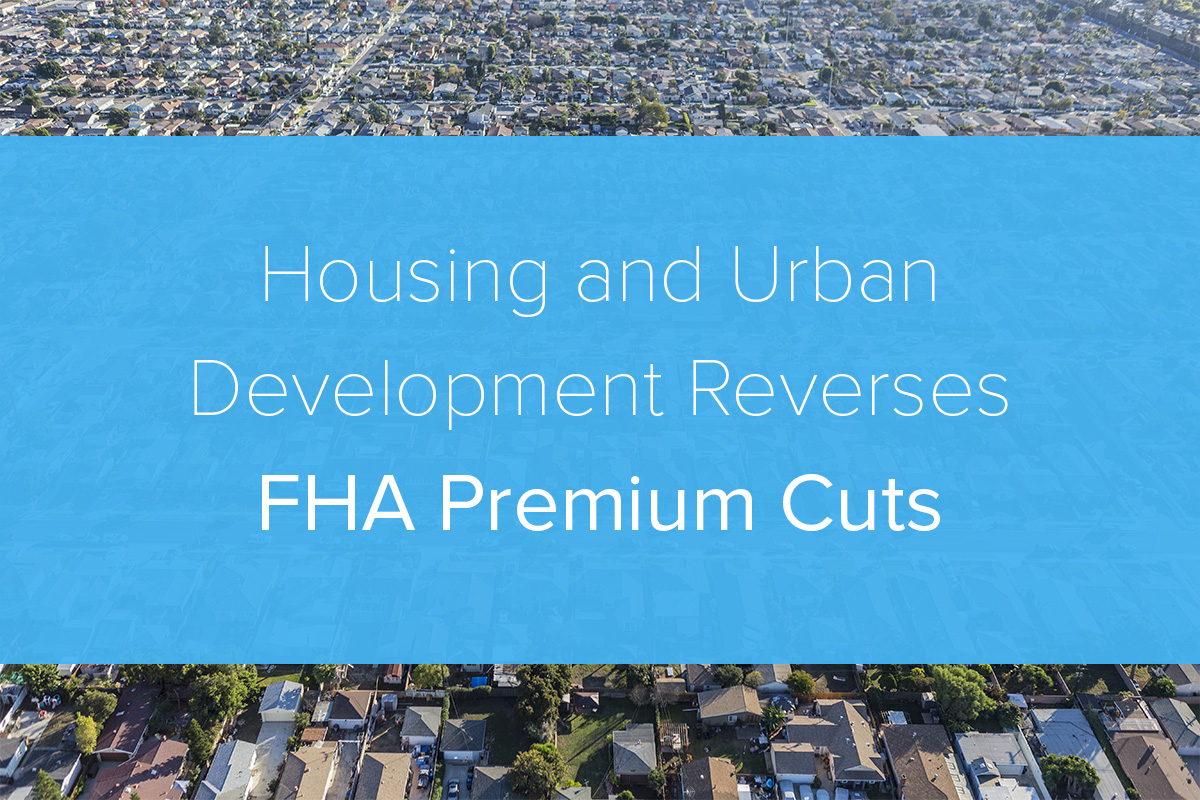Housing and Urban Development Reverses FHA Premium Cuts

The Department of Housing and Urban Development (HUD) announced late last week it will suspend a proposed plan to cut to annual mortgage insurance premiums hours after President Trump’s inauguration. The proposed plan would initially cut rates by 0.25% from .85% for most borrowers, which would save home buyers around $500 on insurance on a $200,000 home.
Just eleven days prior, the Obama Administration, in one of it’s final domestic economic policy actions, announced it would be cutting Federal Housing Administration (FHA) mortgages. Ben Carson, who is President Trump’s nominee for HUD, expressed disdain for then-President Obama’s FHA cut announcement.
To soothe market reactions, HUD issued a letter to lenders stating, “more analysis and research are deemed necessary to assess future adjustments while also considering potential market conditions in an ever-changing global economy that could impact our efforts.”
This decision could heavily impact the segment of first time home buyers, which include Millennials, low income families, individuals primed to take advantage of the cooler winter market, and individuals with poor credit.
For those with subpar credit, minimum acceptable scores vary depending on the size of the load requested by the borrower. According to Bankrate.com, borrowers with credit scores between 500 and 579 are required to make down payments at 10%.
Had the Obama Administration’s proposed cut gone through, monthly insurance payments on a down payment of 5% would have fallen from $141 to $100 per month. An attractive incentive for new home buyers, those with smaller purchasing power, or those looking to rebuild their credit.
Republican lawmakers have expressed concerns over past interest reductions which put taxpayers at risk. Concerns included a future bailout similar to the one seen in 2013, which cost taxpayers $1.7 billion.
The FHA is required to meet a capital reserve ratio of 2%. At the end of fiscal year 2016, that percentage was at 2.3. With the premium reversal announced, the FHA can continue to build it’s capital reserves.
How do I Explain FHA Premiums to My Clients?
The FHA sells insurance to protect against defaults. A mortgage is insured with an FHA loan, which protects mortgage lenders from loss if borrowers default. Lenders with FHA insured loans can “rest assured” knowing their lines of credit are protected, much like taking out full coverage car insurance on a leased vehicle so the dealership is guaranteed the full value of the car back.
The FHA program is popular with first time home buyers and those with subpar credit. With an FHA loan, said borrowers can make a down payment as low as 3.5% even with a credit score of 580 for example.
What does this mean for the 2017 real estate market?
“Cutting the cost of FHA loans and mortgage insurance means more borrowers can meet the income-to-debt ratio to afford a home,” according to NAR president William E. Brown.
According to analysts at Yahoo finance, the Obama Administration felt comfortable that the FHA was much healthier at a capital reserve ratio of 2.3% and could sustain the cuts. In addition, Yahoo Finance analysts claim said cuts could help offset the burden of interest rates and could also be a good indicator of a healthier 2017 real estate market.
First time home buyers, who anticipated the premium cuts, may need to shift their focus, timing, and even preferred purchase size. Millennials or those with little savings may have a difficult time building up to the required 10% down payment. However, lenders and the market may not react as the original plan from the Obama Administration was never put into effect.